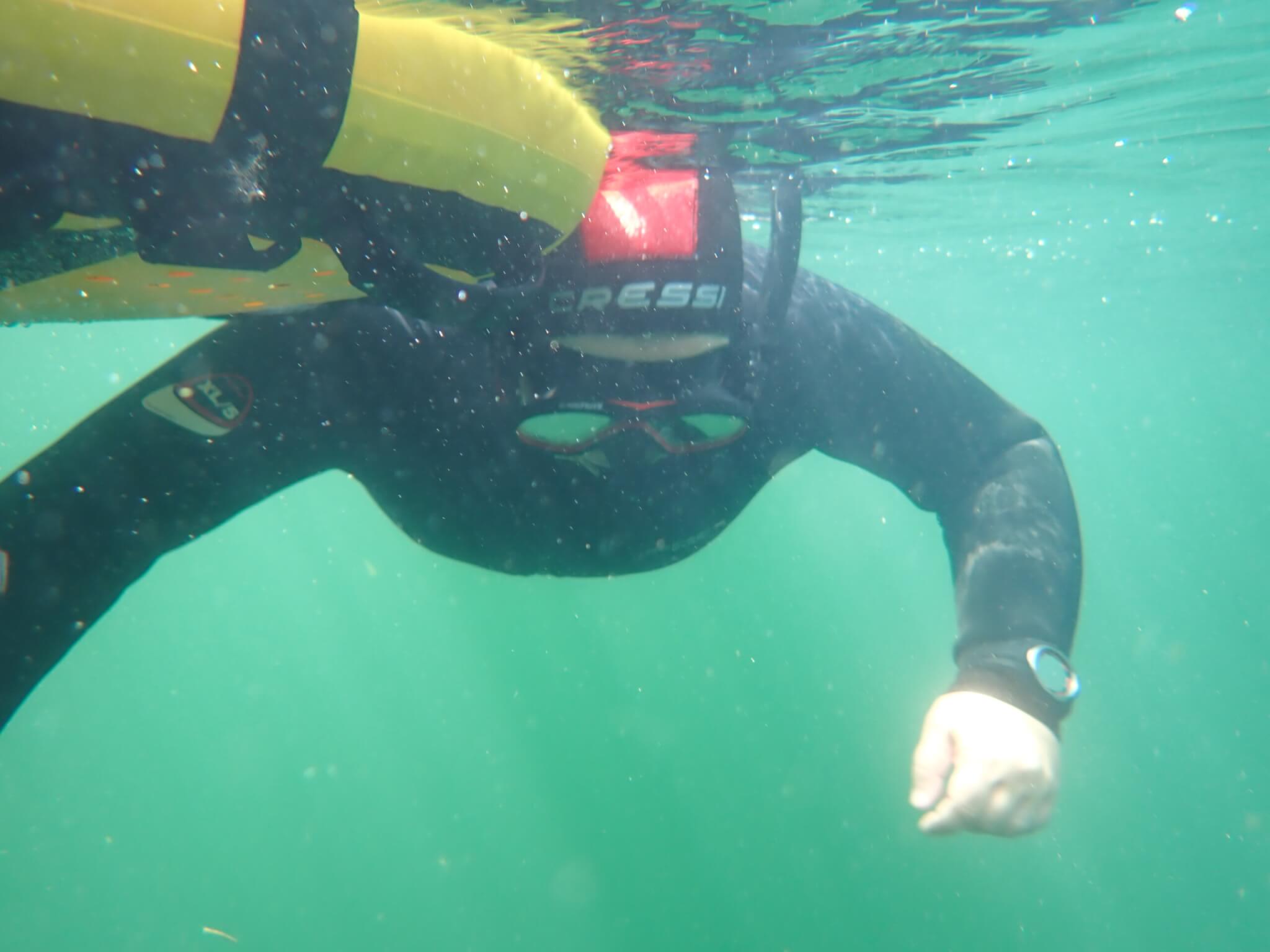
“Walking Through the Future in the Present”, inspired by Wilson et al. (2025)
I’m totally appropriating half of the title of Wilson et al. (2025)’s article, “Walking Through the Future in the Present”, as the name of an activity that I want to try to help teachers make the transition from imagining new ways of teaching to actually doing it. Inspired by what they did, but then also combined with the “Carving space to learn for sustainable futures” by Holmqvist & Millenberg (2024) activity and my Active Lunch Break.
In their article, Wilson et al. (2025) explore the “tensions between imagined futures, past routines, and current realities” in a prototype new learning space by using “walking interviews”, meaning that they walked with teachers in the space and explored it. Which I love — how many times have you seen new high-tech rooms being built only to never be used in the intended way, either because nobody knows how to use them (technically or pedagogically) or because they just don’t work in reality (again, technically or pedagogically)? So I really appreciate that here, the actual use of a new room is investigated to inform future design choices!
Their new room is enormous — consisting of different zones that can be separated with curtains and screens, with small booths — a teacher they interviewed describes it as “we’re trying to make it look good… like a cafe or some relaxed non-academic space“. Also students clearly use the space differently than most other teaching spaces, they claim the room as their own and want to use it to study and hang out in. In describing features of the room that the teachers describe, I came to think about the rooms I teach in. For example,
- Spatial dimensions of a room: In the image below, Leah is teaching about serious games in not a particularly high-tech space, but in one that I find very awkward to teach in (at least when wanting to show projections), because of its long shape with two projection surfaces on one of the long walls, which makes it so that I either have to choose to only use one and cram everybody into one corner, or use both and then each half of the room is looking in a different direction and I don’t know where to point to…
- Travelling distance / access: Walking from one end to the other takes a long time, but also moving things around (in the article chairs, but I imagine also hand-held microphones for example (unless they are built in in their high-tech space? Or they have a foam ball with microphone that they can throw around as suggested in this podcast. Turns out they have ceiling microphones — I find that very intrusive and problematic somehow…)). And can you actually reach all students or is the room furnished in a way that blocks access to some of them?
- Centre and Periphery: This reminds me of our “Introduction to teaching and learning” course, where we assign seating to participants based on demographics. But we notice pattern of how people behave, for example at the group table closest to where the table with the presentation laptop is situated, the front two seats are always engaging with the lecturer in a much more personal way than most other participants, probably of the proximity. And people tend to sit in the exact same chair for the full week, so this is something we could address (either by moving students, or by spending way less time by the presentation laptop — I think I really need to invest in a remote control! Or, as I just did, google and find an app. Now I can switch slides from my phone from anywhere in the room (or probably even outside, as long as I still have a bluetooth connection to my laptop), how cool is that?? :-D).
Wilson et al. (2025) write that “[p]ositive learning spaces are described by Lamb and Carvalho (2024) as spaces that are ‘friendly and playful (convivial space), accessed or experienced more evenly (equitable space), and in harmony with our natural world (sustainable space)’“. If the spaces aren’t like that when we enter them for the first time, what can we do to achieve it? I’ve always been a big proponent of visiting rooms ahead of having to teach in them, and to think through the flow as well as test technology.
I’ve been thinking about learning spaces a lot recently, first inspired by the lecture on the importance of the room Marie Leijon (see also her lecture on the importance of the digital room), and then by Gravett’s work on belonging as a situated practice (and especially the thought that learning can never be fully online, since the student themselves is still physically situated somewhere, and that influences their sense of belonging to something or someone). So there is a lot to think about when we first start teaching in a new room. But I think we might need to pay even more attention to rooms that we have been teaching in for a long time, because we might have gotten used to a lot of things that actually hinder learning and that we would notice and fix in a new-to-us room. And I think that with familiarity with teaching rooms we also fall into habits of how we use them.
The idea for the exercise below — an impact reflection assignment to support transfer of new ideas into practice — is to notice those habits, question them, and possibly change behavior depending on what we are trying to achieve. Especially when we are doing substantial changes to our teaching, like making sustainability a more prominent topic, either in content or in methods (see teaching through sustainability) or through making ourselves more vulnerable and sharing about our own experiences with climate anxiety etc..
Featured image: Me, visualising my dive on the last couple of breaths before I do it.
My idea for the activity “Walking Through the Future in the Present”
At the stage of my course where I want to use this activity, participants have some idea of what they want to change in their teaching. The goal is to look at the old space with new eyes and move in it, imagining it used in a new way: “walking through the future in the present”. This “room and activity diagram” from Örebro can be very useful as inspiration (and I really tried to find an English version, but could only find the one in Swedish).
So here are the instructions:
- walk (at some time when it is empty) into the teaching space you use the most, or will teach the course you are working on in. If you don’t have access to the room, search your phone and/or google for images of the room, or draw a diagram of the layout and features like projection screens, etc.. Even if you have access to the room, having the visual representation in addition might be helpful!
- think back to “what was” the last time you taught in the space. How did you use the space? Where were you, where were the students, which direction(s) were people looking in to look at each other, the teacher, the projection(s)? Who moved in the space, and how? Were there areas in the room where participants seemed more or less engaged, where disruptions originated, ……?
- explore “what is”. Walk through the space. Look at the projection of a typical slide from different seats. Is the font size still legible? How bad is the sun glint? Are there pillars blocking the view (no joke…)? What does it feel like to sit in the front, in the very back, in the middle somewhere to the side? Also notice what is on the walls (posters that are two decades old?), what sounds there are (in one of our teaching rooms the ventilation system sounds like a quacking duck), are there smells?
- now imagine “what could be”, and maybe even practice it. Now that I have an app that works as remote control to move my slides along, how can I teach in a different way than glued to that one table with my laptop (and how do I use the app on my phone in a way that doesn’t look to participants as if I am just playing on my phone)? How would it change things if I taught writing on a whiteboard in a different corner of the room (for example, I like to teach about microaggressions from the back of the room, using a whiteboard (see below) rather than slides that I use for most of the rest of my teaching)? Or if I brought a poster or flipchart to hang somewhere with a key message, or a schedule? A workshop facilitator who I took a lot of workshops with as a PhD student used to bring a bouquet of flowers so people had something to look at if they did not want to have eye contact with others. Could I move some of the furniture? Can I maybe even practice saying something out loud that I want to say in this space in the future but that right now makes me a little uncomfortable? …..?
I think this could be a really good exercise for teachers, not only in the context of teaching sustainability (which is where I want to use it, and where many teachers would like to gain confidence to break the spiral of silence, or to share responsibility for learning with students), where such a practice run can be really beneficial.
The other day, I used the empty building one early morning to look at the room I teach in most often (where the whiteboard from the picture above used to be on the back wall, before we got all new and smaller whiteboards for no apparent reason) — see image below. At least there is a lot of light during summer! This is the view from the doorway (you see the wooden door frames on either side of the image) — usually, you are greeted by an ugly concrete pillar with cables hanging from the ceiling. When I teach in the room, we usually have five group tables set up, and then I do what I sketched in below — I write the group number (and often the names of the people in the group) on the whiteboards by each of the tables (and for some reason I always draw smileys or flowers with it). But what if there were also plants in the room, and the pillar had something on it to make it a bit more friendly? The door opener needs to stay accessible, but maybe a welcome sign? And how lovely would it be to have plants there to break up all the hard lines?
And below is the same room, now looking from the back towards the projection screen (you cannot see the door I from the picture above, it’s behind that concrete pillar…). Turns out the projection screen is very very small, and it is quite distracting that there are these windows out into an area where usually (not right now during vacations) there are a lot of students working and chatting. Also, there is an emergency exit to the left of the projection screen that cannot be blocked. I usually use the sides of the whiteboard that are visible to the left and right of the projection screen to either write stuff that I want visible throughout a course, or pin up a schedule or similar with magnets, so that space doesn’t usually look quite as dead. But it’s always a good reminder to check out what a room looks like “from the other side”, and what it feels like to be in different areas, both as a teacher and as a learner!
This is a room where I have re-arranged furniture a lot, to different configurations for different purposes, so that feels like a natural thing to do (just not for the purpose of taking a picture, too much work). It is also a room where I have pushed myself quite a lot as teacher, and I feel very comfortable doing weird things. But still, it was good to go in and look at it just to take it in. A very concrete outcome, for me, was to put “write ‘welcome’ on whiteboards” on my to-do list for setting up the room before a course — I saw now that that is not just nice to have, but that I think it is actually really important to me. So yes, I think this is a good exercise to do!
Wilson, S., Vallis, C., & Yeoman, P. (2025). Walking Through the Future in the Present: Teaching Practices in Postdigital Learning Spaces. Postdigital Science and Education, 1-21.
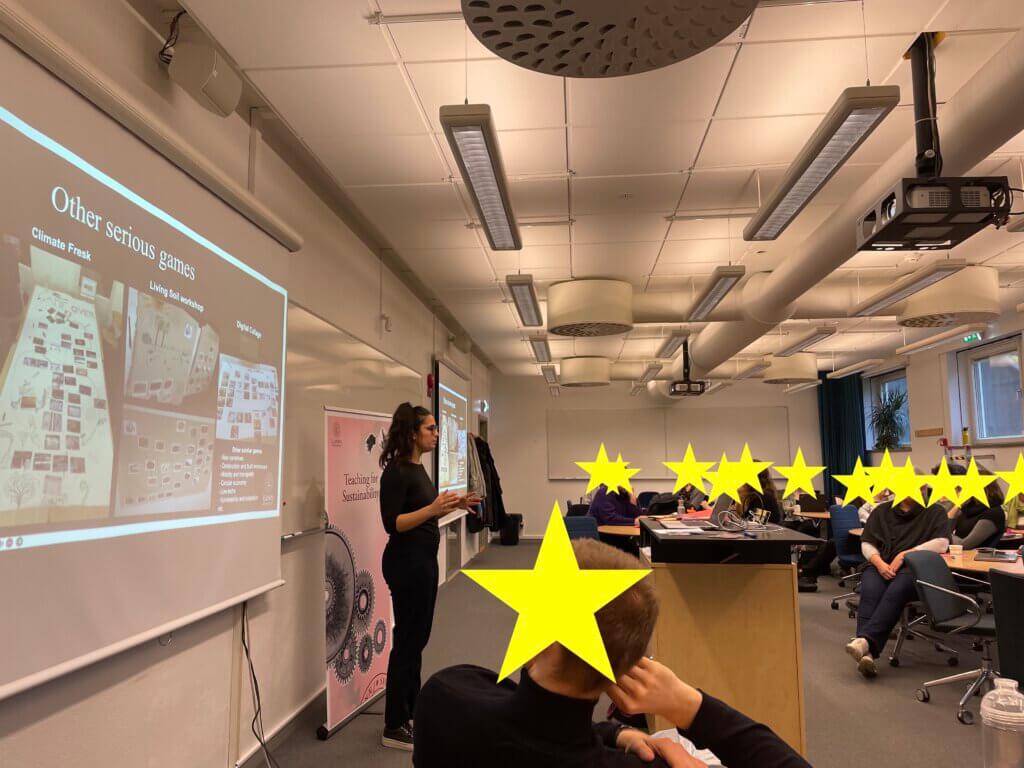
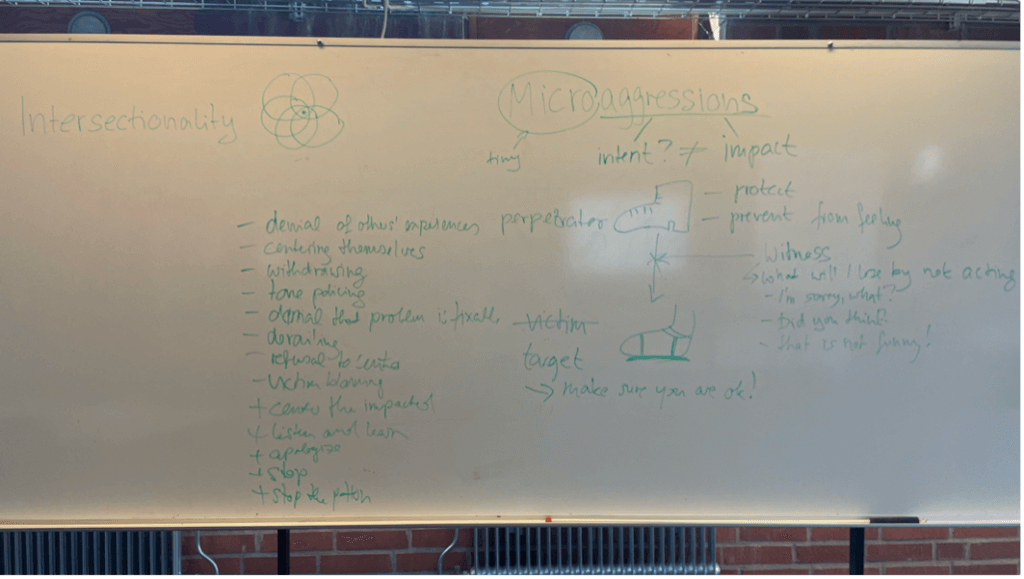
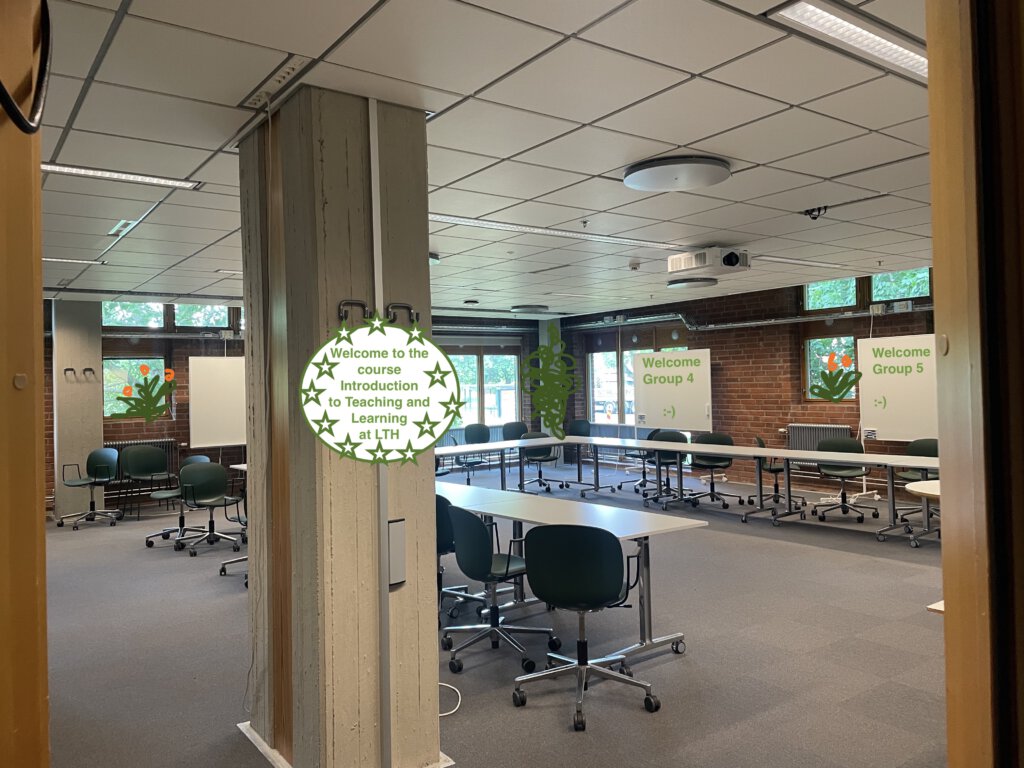
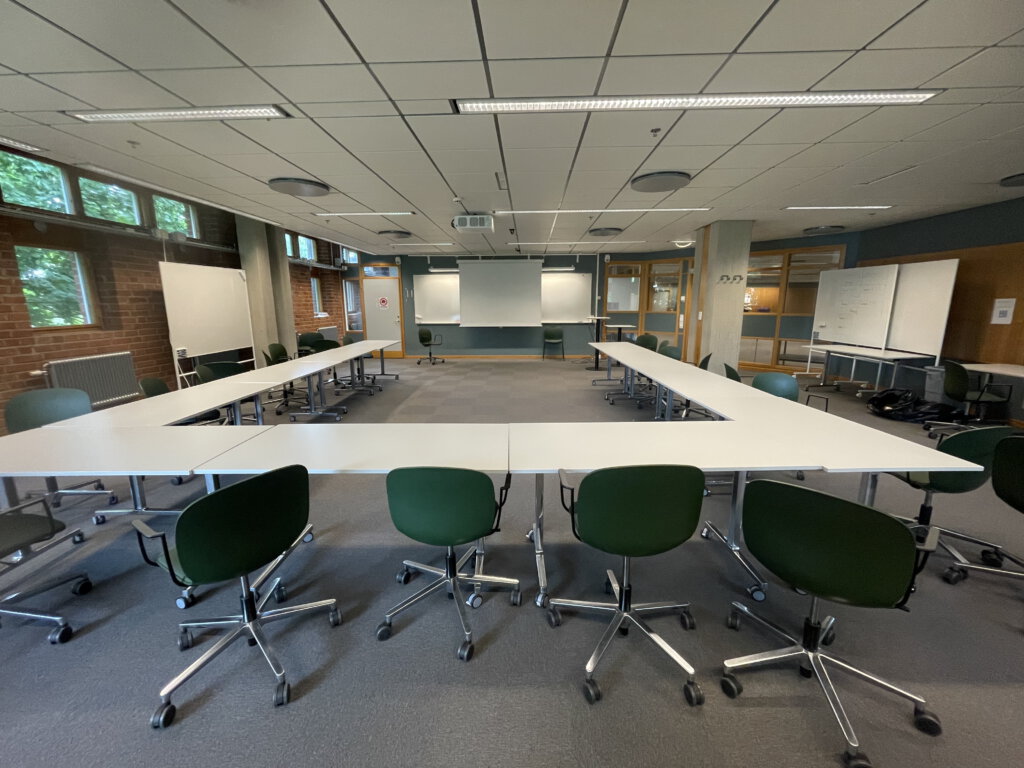
Stephanie Wilson says:
Hi Mirjam, we were so delighted to see that our paper was helpful for surfacing some thoughts related to your own context and interest in learning spaces and imagined futures, and it’s wonderful to hear about your idea for the exercise with teachers! Thanks for sharing. We found the experience of doing the walking interviews really rewarding and learnt so much from them.
All the best, Stephanie